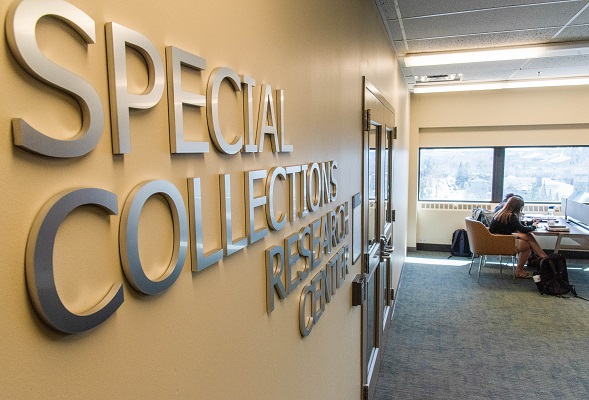Joan Blos is a writer of children's literature who lives in Ann Arbor, Michigan. She is best known for her novel A Gathering of Days: A New England Girl's Journal, 1830-32, which in 1980 won the American Library Association's Newbery Medal.(1) Blos has written several other works of historical fiction as well as picture books for younger readers. The collection documents her career as a writer through items including development materials, correspondence, manuscripts and illustrations of both published and unpublished works.
The Joan W. Blos papers span the years 1971 through 2007 and are made up of some personal materials with the majority of the material. related to her literary works. The Personal series includes correspondence, manuscripts by students and others, and articles, announcements, events information, and awards not related to a specific literary work.
The remaining series are designated by book title and appear in publication order. Unpublished works follow published works and are listed in order of conception. Titles in the collection are: Just Think!; A Gathering of Days; Martin's Hats; Brothers of the Heart; Old Henry; Lottie's Circus; "Pioneers" (in Michigan Traditions); The Heroine of the Titanic; A Seed, a Flower, a Minute an Hour; Brooklyn Doesn't Rhyme; The Days Before Now; The Hungry Little Boy; Nellie Bly's Monkey; Bedtime!; Brother's of the Heart (a dramatization); Hello Shoes!; Letters from the Corrugated Castle; Bringing The Jackson Home; Thisca!; Brave Sisters, Fighting Women; When Times Square Was New; The Applesauce Tree; The Happy Park Day; Old Henry II; Samuel Foote's Nonsense; She's Busy!; The Scribble Scrabble Surprise; Rhymes and Reason; Bathtime; and Ker-choo! A Wintertime Story. Within each title series are several possible subseries:
Development Materials include items such as news clippings, photocopies of articles and stories, early handwritten and typed notes by the author, travel information, postcards, maps, brochures, and library request slips.
Correspondence is primarily with editors, publishers, and some illustrators. This section also includes corresponding manuscripts and drafts that have been edited by the author or editor.
Manuscripts are arranged chronologically and include correspondence from an editor or publisher.
Articles and Announcements include newspaper clippings, programs, announcements, reviews, advertisements for book signings and other promotional events, and interviews.
Events and Awards achieved by the author during her career.
Realia includes items such as playbills for the dramatization of Brothers of the Heart and a handmade quilt inspired by Brooklyn Doesn't Rhyme.
Illustrations, Artwork, and Publication Materials relate to the production of the corresponding title. Examples include mock-ups, color proofs, and unbound signatures for several of the picture books.
Audiotapes include a reading of A Gathering of Days , interviews, and Blos' Newbery acceptance speech for A Gathering of Days.
Study Guides include those associated with the dramatization of Brothers of the Heart.
The Blos papers provide a rich resource for scholars of children's literature along several different avenues. Blos' painstakingly thorough research process is evident in the almost two boxes of materials from her Letters from the Corrugated Castle. One is able to gain an understanding of Blos' creative process through the evolution of the manuscript for this piece of historical fiction. Nellie Bly's Monkey and The Heroine of the Titanic are longer picture books both researched and written as historical fiction. In addition to text, these materials, among other picture books in the collection, provide valuable insight into the collaborative process between author and illustrator. Correspondence between Blos and her editors and publishers provides a window into the business of children's book publishing over the span of Blos' writing career.
